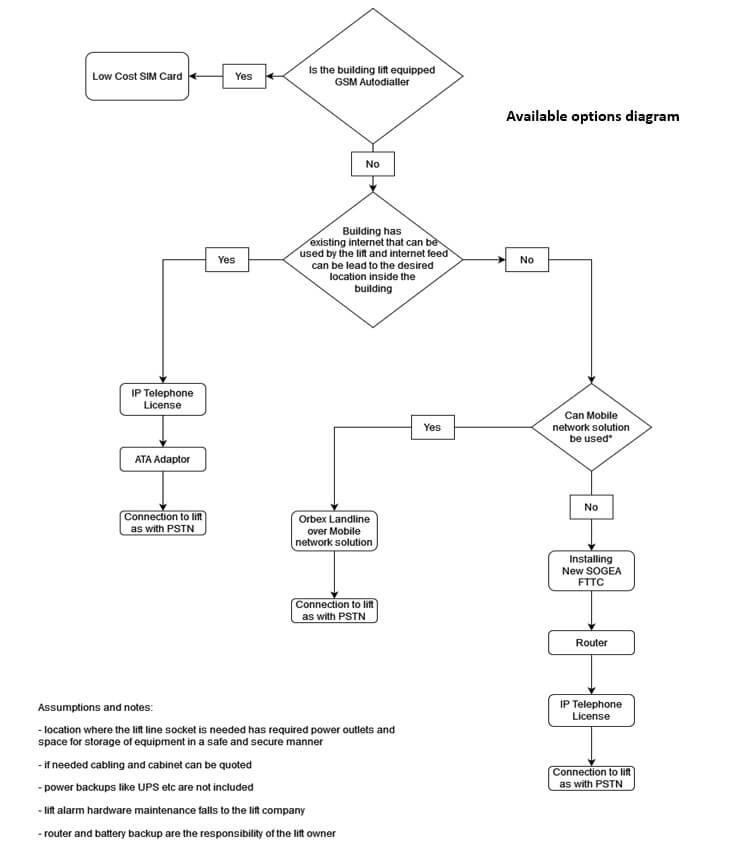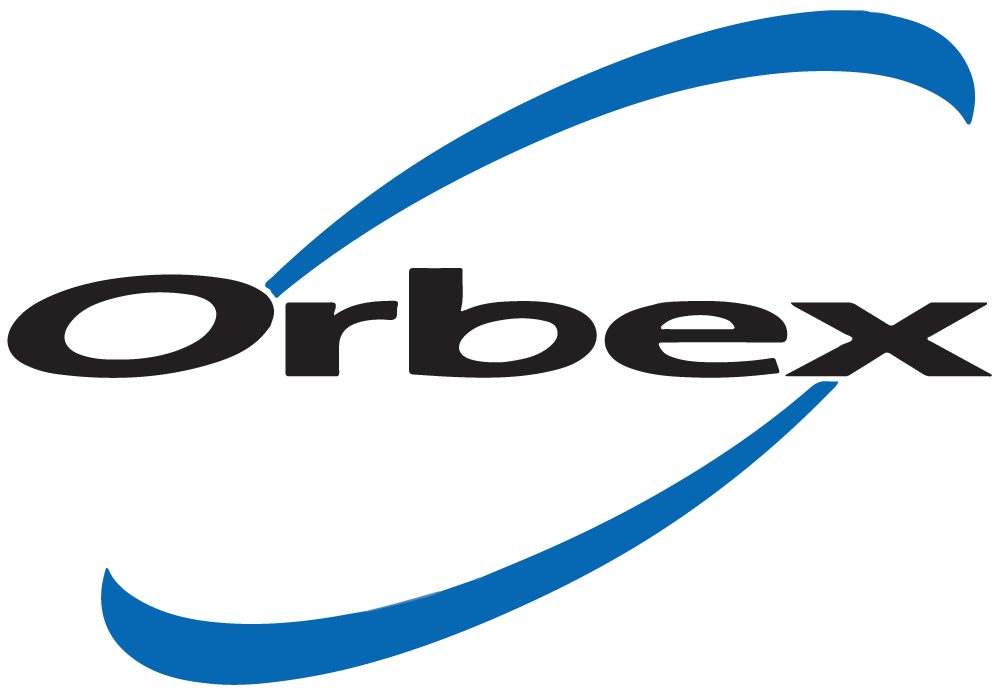Lift Line Replacements
CONVERSION OF LIFT LINES FROM ANALOGUE TO IP
24/04/2023
As reported in the news, Openreach is withdrawing ALL copper-based voice telephone lines from the UK’s network on 31st December 2025, as the network will reach its end of life.This means the traditional delivery of voice and other services across the copper Public Switched Telephone Network (PSTN) will come to an end.
A full stop sell of these services will take effect from September 2023, and complete withdrawal by December 2025, meaning that from September 2023 there are no new supplies of any new voice copper-based telephone connections, including new line installations, change of addresses, stopped line restarts or working line take overs (transfers).
The withdrawal of the copper PSTN telephone service significantly changes how the lift will make calls, as the new underlying technology to deliver the call will require a broadband service to make calls using services such as Voice over IP (VoIP).
The two main new data only broadband products that will replace the copper based PSTN service are referred to as: FTTP and SOGEA
SOGEA Infrastructure
The new digital lift lines can use a service called SOGEA, (not FTTP) which uses the same technology as current Fibre FTTC broadband products. Fibre technology is used from the local Exchange to the PCP (green street cabinet) and then copper from the cabinet to your home. If you have access to FTTP, then this is fibre from the exchange directly into your house.
Do I have to have Broadband or Internet to have a line?
Yes, you must have some form of broadband service for the digital lift telephone to work. However, we understand and appreciate that not all customers need access to full internet. So, for this scenario we offer a very low bandwidth package at just 0.5 Mbps, which is sufficient to deliver a telephone service over VoIP. Alternatively, we can provide a mobile network solution.
In the event of a power cut how will the line remain in service?
The division of duty is clear: lift alarm hardware maintenance falls to the lift company, while the router and battery backup are the responsibility of the lift owner. As the lift owner you would need to purchase a battery backup for both the router, the ONT if a FTTP service and the auto-dialler.
Can I use my own router or Analogue Telephone Adaptor (ATA) to access the service?
Yes, most Fibre routers can be set up for the new service. However, if your router is missing a VoIP telephone socket, then you cannot get access to a telephone service without this. You could purchase an ATA separately and plug this into your existing router. We cannot offer any support for setting up your own router or ATA.
Is there any other alternative to a digital line?
Yes, the line can be provided by using a GSM auto-dialler. We would simply send you a SIM card that you would put into the unit onsite. The monthly line rental would also be much cheaper when compared to a digital line, as well as less likely to lockup. However, these can be costly to change over to. We also recommend you check with your building insurance company, as not all insurance companies all will cover you if using a GSM lift unit. We hope their understanding of GSM units changes over the next few years, as these can be more reliable than a digital line.
Also, you need to anticipate that the closer we get to the copper end dates (September 2023 / December 2025) we expect the cost of these GSM units to increase substantially due to demand.
Another alternative is having a router that would be fitted with the SIM card providing the internet for the new digital line to work. This solution would depend on the mobile networks signal strength in the location where the equipment would be located.
Advantages of utilising intelligent IP Intercom systems versus the risk factors associated with utilising Auto Diallers/GSM for critical communications and emergency systems.
Loss of service at peak times and in high demand situations:
Mobile Networks often become overloaded at times of high demand, such as New Year, large public gatherings (e.g. Concerts, Sporting events, Shopping Centres) and of most concern regarding life safety systems, during Terrorist or Lone Assailant incidents – These are precisely the occasions that emergency systems need to be counted on to operate reliably and effectively!
Also, the counter terror organisations have the authority to turn off local telephony and GSM systems (to interrupt communications between assailants) if they consider it necessary in a crisis situation. This is not a widely published fact but there is evidence to show this power has been exercised in the past – for example in the 7/7 attacks and the recent London Bridge incident.
Speed of Response:
Using multi Auto Dialler’s/GSM in an emergency can seriously affect the quality of service. If for example several or more calls are initiated from car to Security/FCC, it is obvious that the control telephone can only deal with one call at a time and with no queuing facility, contact with the lifts can be compromised. Furthermore, it is also worth remembering that in critical situations, broadcasts to a defined group or all the lifts has proven to be a valuable facility.
Interoperability:
The latest IP based intercom systems are able to provide software level interfacing with associated technologies, such as CCTV, access controls systems, multimedia displays, Building management systems and many more. This gives the end user countless options when looking to have a “smart building” approach in relation to their security technology.
A few items to consider before deciding which solution is the best for end user:
1. Does the building in question have internet access that can be used? Please note that the cable for the internet access would need to be run into the desired lift equipment location.
2. Is that internet access dependable on the PSTN network? If so, this will also be affected by the PSTN shutdown which may impact the operation of the lift line or require modifications at a later date to connect the lifts to the new service eventually.
3. Please confirm the location of where the lift line needs to be presented as a socket?
4. Does that location have enough power outlets for new equipment as new digital lines are not self powered and are dependent on the buildings power feed.
5. Does the location have safe space for storing the equipment? We highly recommend getting a small cabinet fitted, as the equipment in question is sensitive to high levels of dust, high temperatures and other contaminants.
6. Does the location provide a good internet signals? Some lifts have motor rooms in the basement which may not be ideal for a GSM solution however if possible, devices can be placed on top of the shaft and cables run to the required location.
7. As described above the new digital lines are not self powered and depend on the buildings power feed. We highly recommend getting a power backup solution for all the lift line equipment as well as the autodiallers.

Orbex Offering:
Low cost SIM
this solution works in case your lift autodialler is already equipped with GSM unit. We can provide low cost monthly rental SIM cards so that you don’t have to worry about keeping the SIM topped up.
IP Voice License
Voice communications is still and, in many ways, will continue to be the foremost method of communication for many businesses. But as BT switches of its PSTN network, everyone will see their phone line discontinued. Anyone who needs to communicate with customers and suppliers, anyone who takes orders, reservations or answers enquiries or anyone with a security or lift alarm that is linked to a phone line, will need a VoIP application such as IP Voice. This service offers 2 channels allowing 2 calls in or out. As per the diagram and notes above, the service requires internet to operate. The license would be programmed on the ATA adaptor and present the connection in a form of a phone line socket. If the location requires multiple connections, a single multiport ATA can be used and a license per lift is recommended. Details below
Orbex Landline over Mobile Solution
- Orbex offers an inexpensive solution for residential customers and SMEs using personal care services, alarm lines, lift lines and kiosks, amongst many others.
The service operates with a router that has a built in SIM card that can register on multiple networks to ensure signal strength is as strong as possible. The router comes with a built in ATA and a SIP Overlay licence would be configured on the routers ATA allowing 1 number and 2 channels (calls).
mobile network router
TP-Link TL-MR6500v
Built in ATA, works with existing analogue handset
Automated configuration – plug and play
Advanced replacement for faulty routersMultiNet SIM card
Connectivity on all 4 UK networks
Data can only be used for SIP service
Tariff supports unlimited calls*3. SIP Overlay solution
Retain existing number or order new
2 channels
Call forwarding
DND
Emergency services access
Proactive network monitoring
SOGEA + IP Voice
This option is to be used in scenarios where the building does not have internet access owned by the building or the current internet cannot be cabled into the location where lift line equipment will be located. The solution is to install a small SOGEA FTTC internet that allows only for calls, as it comes with bandwidth of 0.5Mbps UP/Down. It would be connected to a router with an ATA adaptor pre-installed and an IP voice license would be configured on the ATA integrated in the router. As previously mentioned this solution does require power and secured space in the location where the lift line is needed.
